
views
Planning Your Driveway

Decide where to put your driveway. Survey your yard and decide where your driveway should be. Also, decide if you want a parking area or a circular driveway. Remember that a larger driveway will be more expensive than a smaller one. Watch for any drainage issues in the area where the driveway will be. It is important to position your driveway so that the water will run off the sides and not pool in the middle of it.
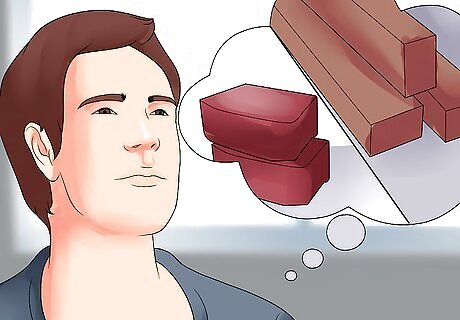
Decide if you want to add a border for the driveway. You may delineate your driveway area with landscaping timber or bricks. This is optional.
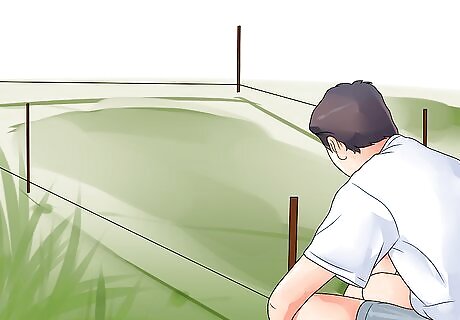
Mark the new driveway area. You will need to mark off the area of your new driveway before starting the driveway project. Place sticks or landscape stakes in the ground every 8 to 10 feet along the length of one side of the area that will be your driveway. Place a second set of stakes at least 10 to 12 feet across from the first set of stakes to mark the width of the driveway. You may want to make the width 14 feet (4.3 m) if your driveway curves.
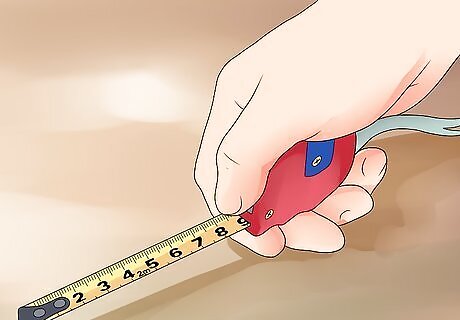
Measure the area of the intended driveway. You will need to know the length and width of your entire driveway. If your driveway curves, you might want to measure in sections and add them together instead of trying to measure all at once.
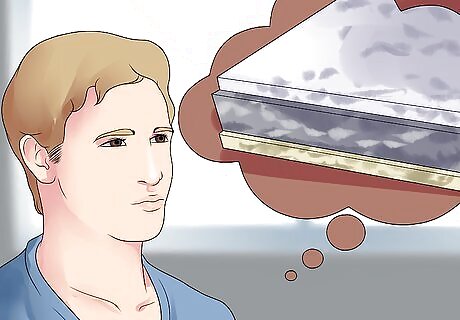
Consider laying two to three layers of gravel. For a really stable driveway, experts recommend laying three separate layers of different sizes of stone. This will take extra money and planning, so you need to decide early if this is the type of driveway you want.

Determine how much of the work you can realistically do yourself. Laying a gravel driveway yourself, even if it is fairly short in length, will require time and physically intense labor. If you are physically unable to do heavy lifting and repetitive work (such as raking the gravel), you may need to hire someone to help you.
Gathering Materials
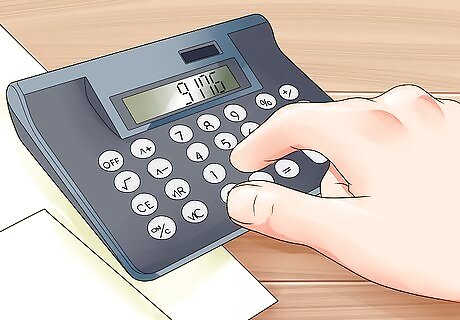
Calculate how much gravel you will need. To determine this, you need to multiply your driveway’s length (in feet), width (in feet), and depth (in feet), then divide by 27 to get the cubic yards of gravel. The depth of the gravel can vary, but should be at least 4 to 6 inches. To determine this measurement in feet, divide the number of inches by 12 (for example, 6 inches is 0.5 feet). If you plan to do two to three layers, each layer will need to be 4 to 6 inches thick, so you will to calculate each layer separately.

Order the gravel and schedule your deliveries. Call a local gravel company and tell them how much gravel you need and what size and type of gravel you prefer. Ask if the company has a website that you can use to choose gravel color, size, and shape. If you are planning several layers, schedule each delivery separately, preferably a couple of days apart so that you can install each layer and let it settle before putting the next layer on top.
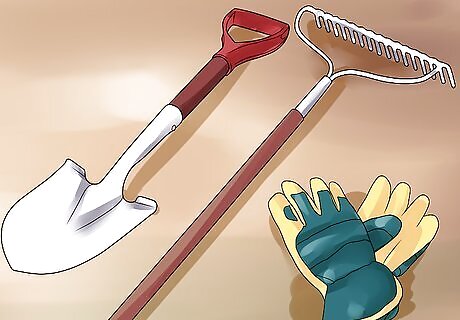
Find the hand tools that you will need. You will need a shovel, rigid metal rake, thick gardening gloves, and possibly a wheelbarrow. If you do not have these tools, consider borrowing them from a friend, buying them, or renting them from a home improvement store or tool rental company.

Rent large tools that you will need. Ideally, you will use a mechanical compactor to press the dirt and rocks. This would be very expensive to buy for one project, so try to rent it from home improvement store or tool rental company.
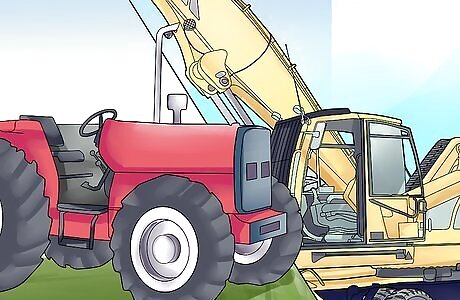
Hire someone with a backhoe or tractor. An alternative to obtaining your own tools is to hire someone who has a backhoe. They will be able to do the work much faster than you can do it by hand.
Preparing the Driveway Area
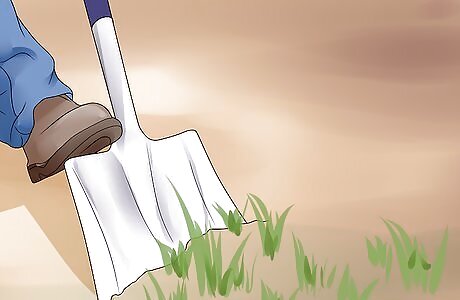
Dig out any grass and topsoil. Using a shovel or hiring someone with a backhoe, remove the top layers of grass and dirt from the marked-off driveway area. You might want to use a tiller to loosen up the soil and make it easier to dig out. The amount of soil you remove depends on how many layers of soil you are planning. You should dig 4–6 inches (10.2–15.2 cm) of soil for every layer of rocks you plan to put down.
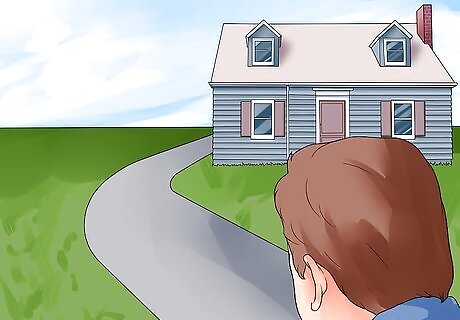
Level the surface of the driveway. This doesn’t have to be perfect since it will be covered by rocks, but your driveway surface should be pretty level—any areas that are deeper than other areas may lead to water pooling and cause mud puddles that have to be filled in with more gravel later.
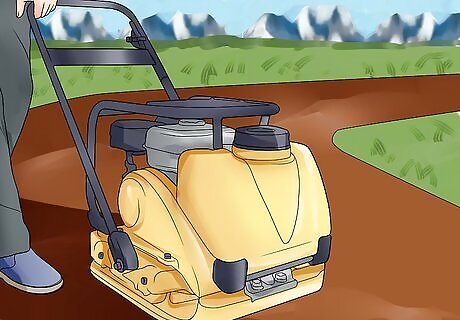
Compact the dirt. Use a mechanical compactor, have someone drive over the area with a bulldozer, or drive over the area repeatedly with a heavy vehicle such as a large truck.
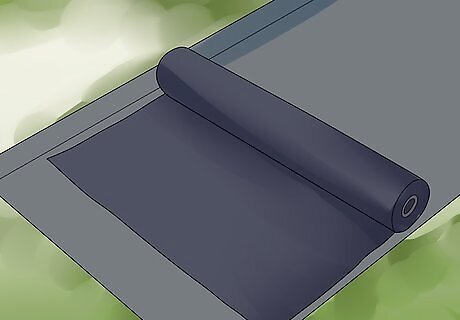
Lay down a weed barrier. If you want to prevent grass and weeds from growing through your driveway, you may want to lay a weed barrier underneath your rocks. Weed barrier is a woven landscaping cloth that allows water to pass through it but does not allow weeds to grow through it, and it is available at most landscaping and home improvement stores. Weed barrier usually comes on a roll. You should be able to lay the roll down at one end of your driveway and unroll it until you have reached the other end of your driveway. Most weed barrier rolls are 4 feet (1.2 m) wide, so you may need to get several rolls. Be sure the amount of weed barrier you buy matches or exceeds the square footage (length times width) of your driveway.
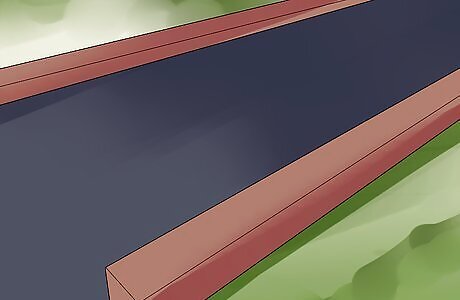
Place your border. If you are using landscaping timber or bricks to edge your driveway, you may want to place them before the gravel is delivered so that they can hold the rocks in place. If you do not want a border, you can skip this step.
Laying and Spreading the Gravel

Ask the gravel deliverers if they can help spread the rocks. Some trucks may only be able to dump the rocks in one big pile, but some trucks can let the rocks out a little at a time, spreading them across the span of your driveway, which will save you a lot of work.
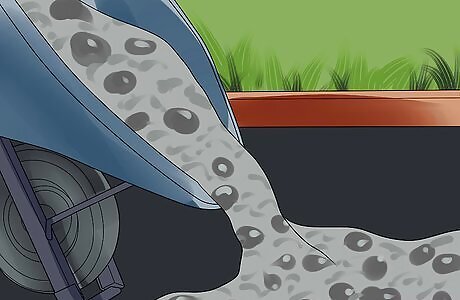
Spread the rocks. Use a wheelbarrow to distribute the rocks evenly along the length of your driveway. Then use your shovel and hard metal rake to spread the rocks evenly across the width of your driveway.
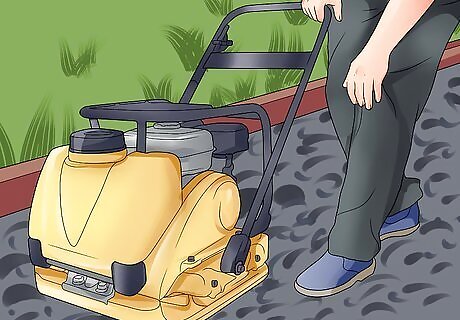
Tamp down the rocks with the mechanical compactor. You can also try driving over the area repeatedly with a heavy vehicle such as a large truck.
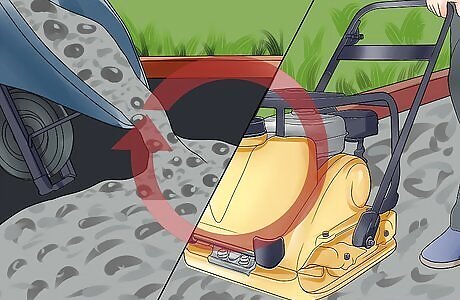
Repeat the spreading and compacting process for each layer of gravel. If you only have one layer, you can move to the next step.
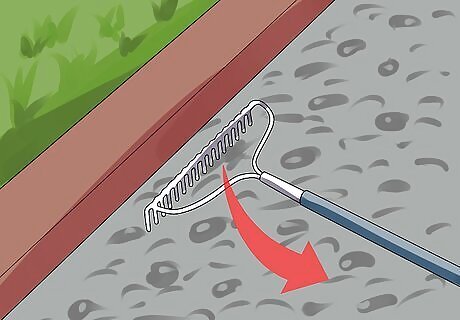
Grade the area. Your driveway should be slightly elevated in the middle and lower on the sides to promote water drainage. You can achieve this by raking in from the sides towards the center so that the rocks are slightly piled higher in the center. You could also add some additional gravel down the center of your driveway and slowly scrape it towards the sides a little at a time. Don’t go too crazy with the grading; you don’t want your driveway to look like a pyramid. The ideal grade is very subtle, with the middle 2% to 5% higher than the sides.
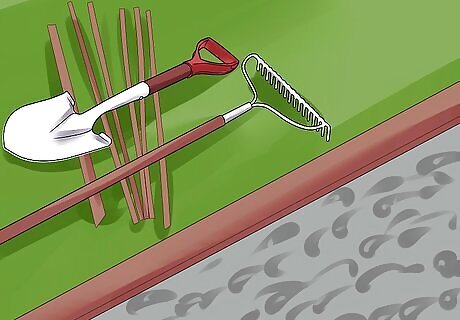
Clean up your new driveway. Be sure to “finish” your project by cleaning up. Remove the landscape stakes and twine markers. Put away or return tools that were rented or borrowed, and be sure to pay or thank anyone who helped you with the project.
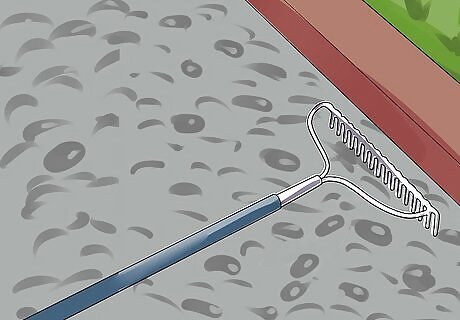
Maintain your driveway. When necessary, rake gravel that gets displaced back into your driveway. Also think about adding gravel every two to three years to any low or bare spots that emerge over time.




















Comments
0 comment